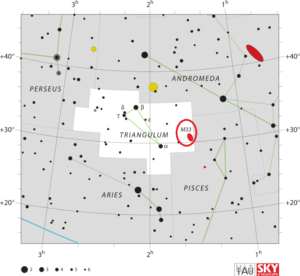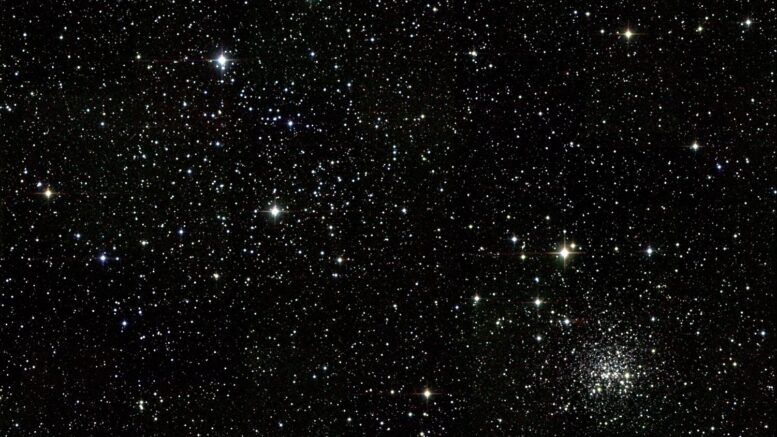Messier 35 is a large open star cluster located in the northern constellation Gemini. The cluster consists of several hundred stars, of which 120 are brighter than magnitude 13. M35 has the size equivalent to the size of the full moon in the sky as viewed from Earth.
| Description | |
| Visible From Pacific Northwest | November To February |
| Best Time To Observe | December and January |
| Minimum Size Of Viewing Device | 10×50 binoculars |
| Object Type | Open Cluster |
| Designations | Messier 35, M35, NGC 2168, Collinder 82, C 0605+243, OCl 466.0, MWSC 0754 |
| Right Ascension | 06h 09.1m |
| Declination | +24°21′ |
| Constellation | Gemini |
| Number Of Stars | 500 |
| Apparent magnitude | +5.30 |
| Apparent dimensions | 28′ |
| Object Radius | 11 light years |
| Distance From Earth | 2,800 light years |
History
Messier 35 was discovered by the Swiss astronomer Jean-Philippe Loys de Chéseaux. English astronomer John Bevis found the cluster independently before 1750 and included it in his Uranographia Britannica.
Charles Messier included the open cluster in his catalogue on August 30, 1764.
Locating M35 In The Sky
Messier 35 is the only Messier object in Gemini. The best time of year to observe it from northern latitudes is in the winter months, when the constellation is high overhead. M35 lies near the border with Taurus, Auriga and Orion.
It is easy to find as it is located about 3.5 degrees northwest of the star Mu Geminorum, in the middle of a region that contains some of the brightest stars in the sky: Aldebaran, Capella, Betelgeuse, Castor and Pollux.
An easy way to locate M35 is to draw a line from Betelgeuse in Orion to Pollux in Gemini and find Alhena, Gamma Geminorum, the brightest star along this imaginary line and the third brightest star in Gemini, after Pollux and Castor. A line drawn from Alhena in the direction of Capella in Auriga constellation leads directly to the cluster. Capella is easy to identify as it is the sixth brightest star in the sky, outshining the other bright stars in the vicinity, and part of the Auriga pentagon, formed by the constellation’s brightest stars.

Viewing M35
The cluster’s brightest stars can be resolved in 10×50 binoculars. Small telescopes will reveal some of the fainter stars, while 6-inch and 8-inch telescopes at low magnifications show a field full of stars across the cluster.
Photographing M35
Photographing Messier 35 can be done in a plethora of ways. There are guides for using unguided DSLRs using a lens similar to a telephoto lens, and then there are ways to perform autoguiding using CCD cameras and telescopes. It seems that because there are so many stars, the only tricky part about photographing this target with its cluster neighbor is to properly center the camera so you can capture them both without cutting either one off. However, once centered, there are so many ways to capture this cluster, just make sure that the images remain crisp.
Sources And Further Reading
Descriptions of all of Messier Objects can be found here.
https://freestarcharts.com/messier-35
https://www.galactic-hunter.com/post/messier35
https://www.britastro.org/node/12295

Be the first to comment on "Messier 35"